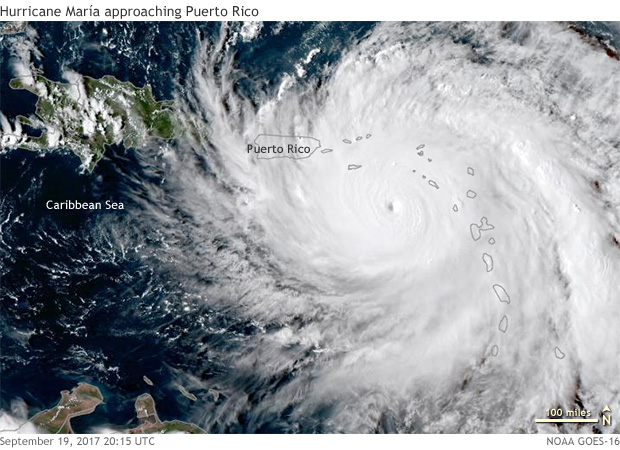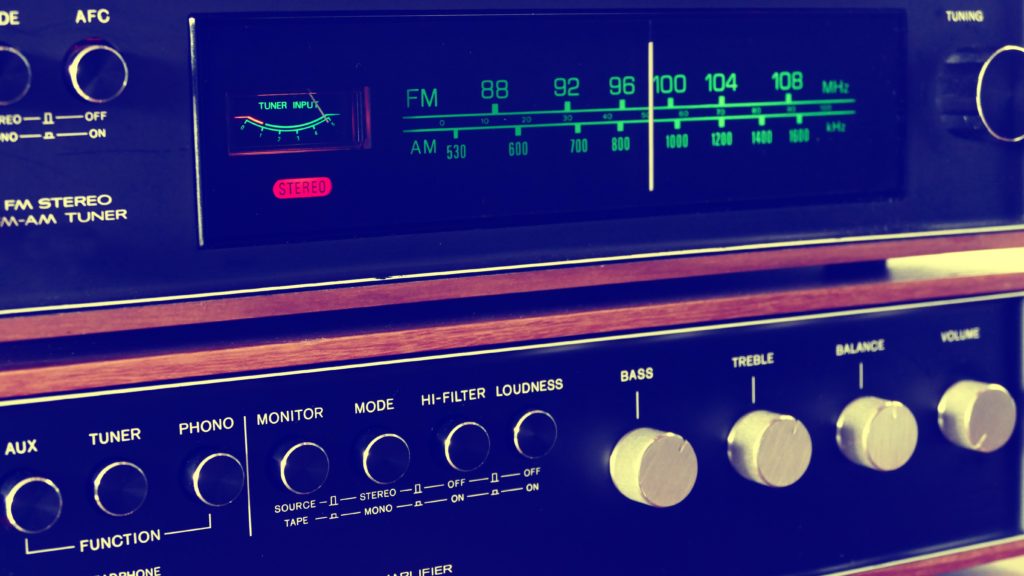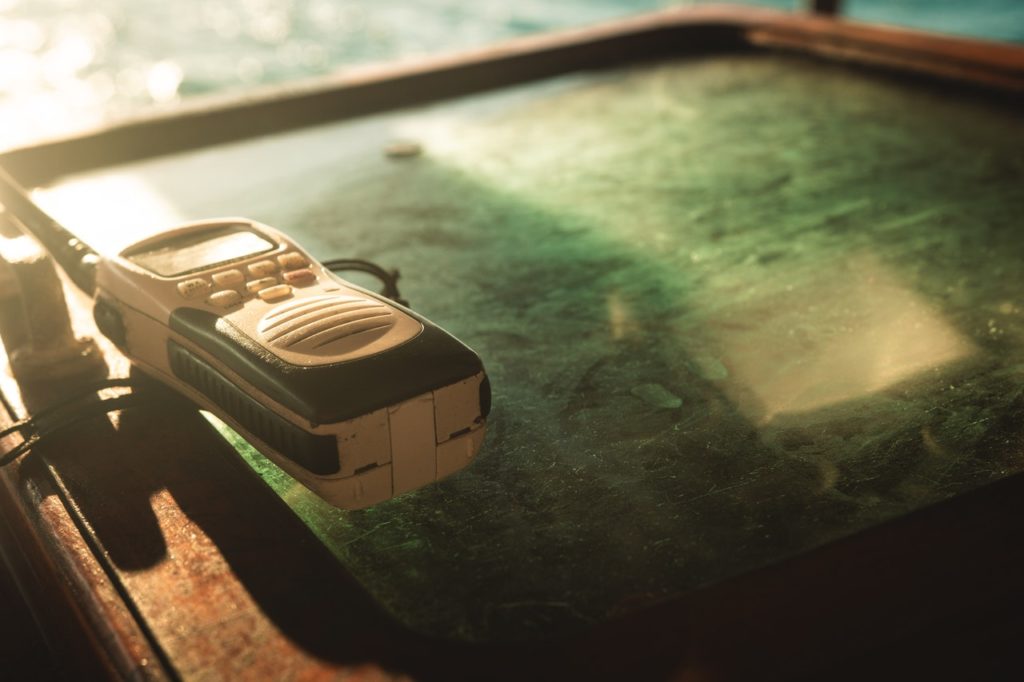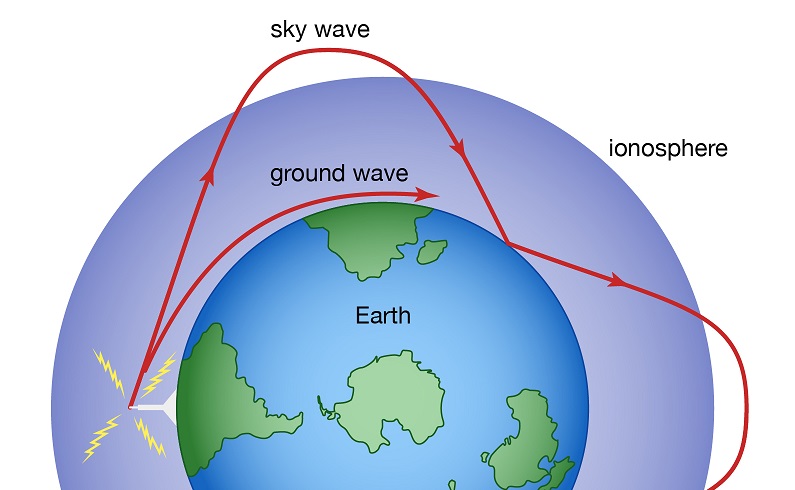What is Ham Radio – [FREE DOWNLOAD – Tips for Passing the Ham Radio Exam]
Amateur Radio
At about 10:15UTC on September 20, 2017 hurricane Maria made landfall with 175MPH winds near Yabucoa, Puerto Rico. For all intents and purposes the island’s infrastructure was destroyed. All landline, internet, cell, commercial electric services, and fuel delivery were rendered inoperable. Everything had failed, except radio communication; in particular, ham or amateur radio. Within hours of the winds subsiding local ham radio operators were communicating in support of police, first-responders, hospitals, and the power company. But what is ham radio? And why, when everything else failed, did ham radio (or more technically amateur radio) succeed?

Eight days later I disembarked from a plane that had just landed in San Juan, Puerto Rico. Twenty-one ham radio operators, selected from hundreds of applicants in the U.S. mainland, and I walked through the heat and humidity of an un-airconditioned Luis Munoz Marin International Airport. Along with backpacks full of personal gear that would provide self-sufficiency for 21 days in austere conditions we carried 50-pound ham radio “go-kits” that can provide world-wide communication. In our case, we would need to communicate anywhere from a few miles intra-island to over 1200 miles to the interior of the continental U.S.
WHAT IS HAM RADIO?
A ham radio is a subset of the larger category of radios. Ham radio can refer to either the noun “radio” or the activity of using radios for two-way communication.
All radios use electromagnet waves to transmit and receive information. Electricity produces both electrical and magnetic waves. Those waves are always perpendicular to each other. If the electrical waves are vertical, then the magnetic waves are horizontal and vice versa. Those waves have a frequency which simply how close together the waves are from one to the next. Think of the wave at the beach. If the waves hit the shore more often, or closer together, we can say they hit the shore more frequently or with a higher frequency. Waves, both ocean and electromagnetic, have a wavelength. The wavelength is the distance from one wave peak to the next. Intuitively the more distance there is between the waves the less frequently they’ll crash on shore; the longer the wavelength the lower the frequency. The third dynamic is how big the waves are. This is called amplitude. The bigger a wave is, the more powerful it is, or it has a higher amplitude than a smaller wave.
More than 100 years ago an Italian guy named Marconi realized that harnessing all three of these properties of electromagnetic, or radio, waves allow information to be transmitted and received across considerable distances without wires, thus the term WIRELESS. This discovery would revolutionize the world and continues to do so today.
Few people realize how much radio affects their everyday life. The obvious devices that use radio waves are radios like those in our cars. Of course, we also think of walkie-talkies. Some modern, high-tech devices that we use every day rely on Marconi’s discovery: cell phones, wireless game controllers, Bluetooth devices, Wi-Fi, GPS, baby monitors, wireless keyboard and mice, drones, Chromecast, and Amazon Firesticks…well, you get the idea. It’s almost impossible to get away from radio waves. But we’re getting a bit far afield from using radio waves to communicate, which is probably why you’ve read this far. There are two main classifications of radio transmissions for our discussion here.
WHAT IS BROADCAST RADIO AND WHAT IS HAM RADIO?

All of those devices use radio waves to carry information from a transmitter to a receiver, but for the majority of them, the information can’t be directly interpreted by humans. Sure enough, the information carried by Wi-Fi eventually shows up on our computer screen, but if you hear the information directly you’d have no idea what it contained. Remember the “duck that swallowed a kazoo” sound from old dial-up modems? Yeh, like that.
The information carried by radio waves in ham radio and broadcast radio is usually understandable by humans. It might be news, music, weather information, or traffic reports. The most common information in those cases is the human voice and the most common classifications of radios are broadcast radio and ham radio (there is also first-responder radio, but we’ll come back to that because it’s similar to ham radio in many ways). Broadcast radio is what you listen to in your car. It’s from one transmitter to many receivers and it’s one way only. The radio station can talk to you, but you can’t talk back to the radio station. Sure, you can yell at your radio, and we often do, but they don’t hear you.
Ham radio is one-to-one and two-way. You can talk to me and I can talk to you. There might be other people listening and maybe participating in the conversation, but ultimately, it’s personal in nature. This brings up one other difference between broadcast and ham radio. Broadcast radio is for profit. Ham radio operators are forbidden by FCC regulation from making money with on-air activity or transmissions. Ham radio operators can’t use their radios for business. This is what is meant by “amateur” radio. There is an exception for discussions about selling used ham radio gear on-air, but that’s not really making money because there’s rarely a profit in selling used stuff.
Let’s use a fishing analogy to differentiate between broadcast and ham radio. If you use a net to fish then you’re trying to catch as many fish with one “cast” as possible. You throw out the net, wait for fish to swim into the net, then you gather up the net. There’s one fisherman and many fish and you don’t really get any feedback from the fish when they swim into the net. You cast a broad net. Broadcast radio is like this. It’s from one to many and the fisherman is active while the fish are largely passive and minding their own business.
Ham radio is like fishing with a pole. It’s rare to catch multiple fish with a fishing pole, yes, it’s done, but that’s the exception. Fishing with a pole is between the fisherman and the fish, one to one. And there’s some feedback from the fish to the fisherman when the hook is set, it’s interactive.
WHAT IS HAM RADIO VS. CB RADIO?

You’ve probably heard or even used CB (Citizens Band) radio, good buddy. And you’re probably wondering what the difference is between ham and CB radio. It comes down to two things.
First, amplitude. Remember the stuff about frequency, wavelength, and amplitude? It comes down to power. CB radio is limited to 4 watts of power. Under the most common atmospheric conditions, CB radios can transmit over miles, at most. Most ham radio walkie-talkies start at 4 watts and can go up to 7 or 8 watts. Larger ham radios transmit with hundreds of watts up to 1500 watts. All things being equal ham radios can transmit much, much farther than CB radios; down the street, across the state, across the country, around the world, to the International Space Station, to the moon, and back (seriously, it’s called earth-moon-earth propagation.)
There’s a part B that goes along with power and that’s frequency. CB radios are limited to very specific frequencies. Also, CBs aren’t authorized for use on ham radio frequencies, and ham radios aren’t authorized for use on CB frequencies. But CB frequencies used to be ham radio frequencies and even if they shared frequencies ham radio would still out-power CBs.
This brings us to the second difference, regulation. Because CB radio is limited in range any interference caused by CB radio is limited. Because the interference is limited the Federal Communications Commission doesn’t require a license to operate a CB radio. The unintended consequence of this limited regulation is that CB radio is like the wild, wild west. Pretty much anything goes on CB frequencies. Think of it as the NSFW (not safe for work) of radio frequencies.
Operating a ham radio requires a license. There are three levels of ham radio, each with its own exam. Those levels, or classes, in order of increasing exam difficulty and frequency privileges, are Technician, General, and Amateur Extra. The Technician class is entry-level and the exam is not difficult to pass. In fact, we offer an online/on-demand course through outdoorcore.com to help you pass the Technician exam in less than six hours. Anyone in the U.S., even non-citizens that aren’t officials of a foreign government, can earn a ham radio license. I know of kids as young as 8 years old that have earned their ham radio license.
There are other radio services, such as Multiple Use Radio Service (MURS) and Family Radio Service (FRS), but these are very similar to CB radio in power and range of transmission. A subset of CB radio is called Free Banding. This is accomplished by modifying CB radios to operate just outside of the authorized CB frequencies. If CB is the wild, wild west of personal radio then Free Banding is Mos Eisley from Star Wars, though the language tends to be better. Free Banding is popular with a lot of preppers and it seems that there is some form of Free Banding in just about every corner of the world.
OK, THAT ANSWERS WHAT IS HAM RADIO, BUT HOW DOES HAM RADIO WORK?

The basic components of a ham radio station are a transmitter, a receiver, and an antenna system. Ironically the transmitter transmits radio waves, the receiver receives radio waves, and the antenna both radiates radio waves created by the transmitter and collects radio waves from open space for the receiver. Most modern ham radios are transceivers with both the transmitter and receiver in the same box.
To communicate by voice from one radio to another radio a ham radio operator speaks into a microphone attached to the transmitter. The mic turns the acoustic energy into a very weak electrical signal. The transmitter amplifies that electrical signal and transforms it into radio waves that are emitted from the antenna. These radio waves “propagate” or travel through space to an antenna connected to a receiver. These radio waves “induce” a very weak electrical current in the receiving antenna which is fed to the receiver. The receiver amplifies this weak signal and converts it to acoustic energy which is heard from a speaker. There are many other forms of information or modes, that can be sent via radio waves such as Morse code or digital signals generated by a computer. The process is much the same regardless of the mode, but we’ll stick with voice communication for simplicity. There are also different modulations for voice, such as AM or FM, but the differences are technical in nature and pretty much transparent for this discussion.
Here’s where it gets fun. Depending on the frequency the signal emitted from the antenna can travel a few miles or thousands of miles. There are many factors that dictate how far it will go, but no matter what level of ham radio you have everybody has the right to transmit as far as possible. One of those factors is the frequency being used. There are three basic frequency ranges used in ham radio.
The frequency (measure in megahertz or MHz) range with the shortest transmitting distance, all things being equal, is UHF or Ultra High Frequency (300 to 3000MHz). The next frequency range by distance is VHF or very high frequency (30 to 300MHz). For all intents and purposes both UHF and VHF are limited in distance by “line-of-sight” or the horizon. The signal is strong enough to travel farther, but if the two antennas can’t “see” each other over the horizon, then the radio waves won’t propagate to one another. There are exceptions to this rule, but they’re outside the purpose of this post. Sometimes hams use “repeaters” which have antennas mounted one hundred or more feet in the air that repeat the signal over the horizon, but the line-of-sight principle still applies.
To propagate a signal to a radio hundreds or thousands of miles away ham radio operators use HF or high frequencies (3 to 30MHz). To accomplish this ham radio operators “skip” the signal off of the ionosphere which is hundreds of miles above the earth’s surface. In most cases VHF and UHF punch right through the ionosphere (this is why NASA uses VHF to communicate with astronauts), but HF bounces off the ionosphere and returns to earth. Picture a stone skipping off of a pond. Sometimes the signal bounces off of the ionosphere and then bounces off the surface of the earth, then bounces off the ionosphere again. There have been cases of a signal completely circling the earth so that the ham that sent the signal can hear the tail end of his own transmission as it reaches all the way back to his own antenna. Talking via ham radio from the east coast of the U.S. to Europe or from the west coast to Asia is an everyday occurrence. Hams don’t give a second thought to talking state to state, all without being connected by any infrastructure. Just bouncing radio wave across the sky.
THAT’S WHAT AND HOW,
BUT WHY HAM RADIO?
That’s a good question, especially today when we can talk around the world via the internet. But, where’s the romance in that? Anyone can use Skype, but there’s a certain rush to building your own antenna (I’ve made them out for Slinkies, ya’ know, the toy) hooking it up to my radio, and seeing who I can talk to in Russia or Japan. You never really know who will answer you. Think back to the fishing thing. I can go to the store or my fishmonger and get fish, but catching my own fish, having to work for it and succeed or fail by my own hand, is much more fulfilling and enjoyable. Frankly, it’s just good fun.
And there are a lot of different ways to communicate via radio. I’ve sent and received faxes via radio; I’ve learned Morse code and sent messages using technology similar to what the Titanic used. There are contests and I’ve talked with McMurdo station in Antarctica. I’ve hiked mountains and set up a radio to talk to people in Asia, Africa, and Europe. I’ve earned awards for talking to every state in the Union and for talking to over 100 countries. I’ve collected certificates for talking to people commemorating Route 66 and contacting all 13 of the original colonies.
But there’s a more important point to communicating without using the infrastructure and that’s because the infrastructure can be compromised. Think that it can’t happen? Just 24 hours before I wrote this blog post there was a widespread outage of 911 service throughout the U.S. https://www.cnn.com/2020/09/29/us/emergency-911-outage-trnd/index.html There were surely some ham radio operators that helped with communication while the service was down. How do I know? It’s happened more often than many people realize and I’ve. I’ve used ham radio to gather weather reports at the National Weather Service during severe storms; I’ve sat in special needs shelters during hurricanes and made calls for medical assistance because phones weren’t working
I started this post with a story about Puerto Rico and Hurricane Maria. If ham operators didn’t know how to utilize radio equipment to bounce radio waves through the atmosphere then things on that island would have been much worse. Because ham radio is a hobby most hams know how to build or repair their equipment with whatever is lying around. Not only did the internet and phone service go down during Maria, but the antennas on top of police and fire stations and hospitals were also destroyed. The radio equipment in buildings damaged by wind and rain was rendered inoperable. Local ham radio operators used their years in the hobby to bring that equipment back to life. The team that I was with was able to carry our radio “go-kits” into remote villages and send messages to the continental U.S. weeks before phone and cell service was restored.
In short, it’s important to be part of something bigger than yourself.
DO YOU WANT TO BE A PART OF WHAT HAM RADIO IS?
Are you smarter than a fifth-grader? Yep, there are hams in the fifth grade. The entry-level exam is the Technician exam and you can study for and pass the exam in less than six hours. *SHAMELESS PLUG: I offer a course on outdoorcore.com that will prepare you to not just take the entry-level ham exam, I guarantee that you’ll pass the exam. https://www.outdoorcore.com/courses/the-ham-cram-ham-radio-zero-to-license-in-6-hours
If you’re not ready for a step that big, read my post How to Study for the Ham Radio Test and download my tip sheet.
Or you can jump ship on me totally and use a study guide. I even recommend some here.
WHAT HAPPENS AFTER I HAVE MY HAM RADIO LICENSE?
The Technician class (entry-level) license gives you full privileges for all VHF and UHF and limited HF frequencies. In many ways, this is like CB radio with benefits.
First, the radios for VHF and UHF are much more powerful than CB, reaching 10s of miles and up to 100s with the right atmospheric conditions. New VHF/UHF radios cost anywhere from $50 (walkie-talkies) to hundreds of dollars. Used radios are always available and can be had for very reasonable prices. By the way, many hams start with one of those $50 walkie-talkies and have a great time in the hobby for years with just that.
Second, most amateur emergency radio service is done in VHF and UHF, so you can contribute right away. Again, one of those $50 radios is enough to help out in times of disaster. Be sure to join your local amateur radio emergency services group. The most common are ARES (Amateur Radio Emergency Service) and RACES (Radio Amateur Civil Emergency Service). It’s important that you get involved with an organized group if you want to help your community. Each group has unique operating procedures that are designed to keep a bad situation from being worse. They may also have insurance restrictions or background checks necessary for deployment, so don’t take it personally if they don’t accept help from someone who hasn’t been involved or trained as a member.
One more thing about working with ARES or RACES, many times they have loaner equipment or go-kits ready for members that don’t have their own gear, so please don’t let a lack of a radio keep you from being involved.
Once you have your Technician license you’ll probably get the itch to increase your frequency privileges to include HF. You can do this by upgrading to the General class license through another test. The good news is that the General exam isn’t much more difficult than the Technician Class exam. The HF privileges of the General class license literally opens the world to you. More than half of all U.S. hams are General class and “work the world.”
HF radios and antennas are much more robust and come with a price tag that reflects that. But there are still cost-effective ways to take advantage of the increased frequencies. A new HF radio will set you back as little as $1000 and antennas can cost hundreds but used HF rigs can be found for as low as $300 and I’ve made antennas with wire laying around the house or with toy Slinkies. And please don’t let used radios scare you. Ham radios retain their value very well and hams are notorious for taking pride in their gear. Get involved with a local club. Many of their members look for opportunities to help new hams with gear and encouragement.
The license class with the most privileges is the Amateur Extra class. I’m not going to spend a lot of space here talking about the Extra class because the jump learning curve from the General exam to the Extra exam is huge. For many hams, the increase in frequency privileges isn’t worth the effort and General hams can talk just as far around the world as Extras.
There it is in a 3000-word nutshell, but it only scratches the surface of “what is amateur radio.” What I can tell you is that the fun I’ve had in the hobby and the satisfaction that I’ve experienced in the service to society through ham radio is matched only by my being a dad and grandfather. And it’s invaluable to my family and many others in preparing for worst-case scenarios.
Now, go get your license.
And remember,
survival is more than just staying alive.
Register here to learn everything that you’ll need to know to earn you ham radio license. https://www.outdoorcore.com/courses/the-ham-cram-ham-radio-zero-to-license-in-6-hours
